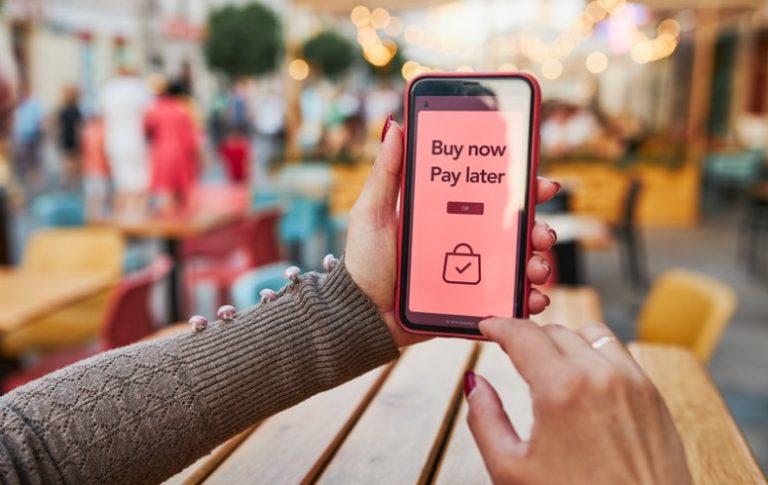Post Contents
Unlocking the ability to shop now and pay later has revolutionized the way consumers approach online purchases. At the forefront of this financial innovation is Klarna, a payment service provider that offers a seamless “Buy Now, Pay Later” experience for shoppers around the world. But have you ever wondered how Klarna actually makes money? In this blog post, we will delve into Klarna’s business model and explore the various revenue streams that keep this fintech giant thriving. From merchant fees to interest charges, we’ll uncover the secrets behind Klarna’s success and shed light on its path to profitability. So grab your virtual shopping cart and get ready to embark on a journey through the fascinating world of Klarna!
What Is Klarna?
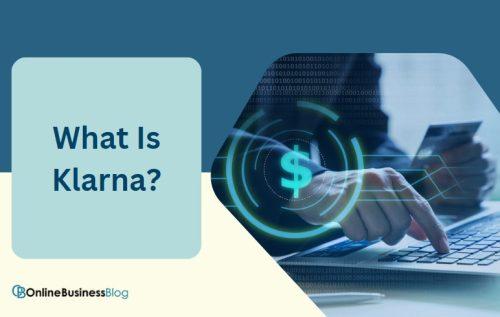
Klarna is more than just a payment service provider – it’s a game-changer in the world of online shopping. With its ‘Buy Now, Pay Later’ (BNPL) model, Klarna allows consumers to try out products before they commit to paying for them. How does this work? Well, Klarna partners up with retailers to handle the payment process on their behalf, giving shoppers the flexibility to choose from a variety of payment options.
Whether it’s paying directly and deferring the payment for up to 30 days or opting for interest-free rates, Klarna offers convenience and choice. When it comes to larger purchases, Klarna goes even further by allowing financing options with multiple payment instalments over a maximum period of 36 months.
What sets Klarna apart is that it doesn’t charge consumers any fees or interest. Instead, it charges the retail stores it collaborates with. This may make you wonder why an online store would willingly give away shares of its revenue for payment processing through Klarna. The answer lies in the impressive benefits that come along with using Klarna as a payment solution.
According to Klarna itself, partnering with them can lead to a significant increase in orders – up to 44% higher conversion rates and a whopping 68% increase in order volume. This alone makes working with Klarna an enticing proposition for merchants looking to boost their sales.
But there’s more! One major advantage for merchants is that regardless of whether customers end up making their payments or not, Klarna transfers the money upfront for every transaction. This means improved cash flow and reduced risk exposure for businesses.
On top of all this, Klarna provides merchants with valuable tools designed specifically to enhance their sales performance. These tools include business insights dashboards where they can analyze crucial metrics like order numbers, weekly sales figures, and conversion rates.
Additionally, there’s an on-site messaging feature that enables merchants to address their customers’ most pressing questions, ensuring a seamless shopping experience.
A Short History Of Klarna
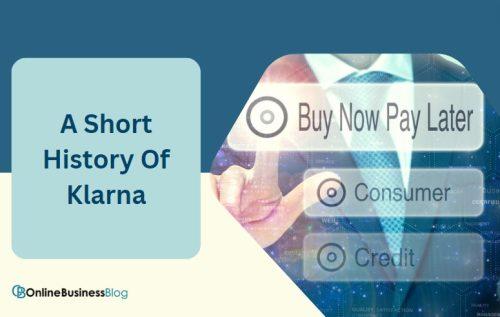
Klarna, founded in 2005 by Sebastian Siemiatkowski, Niklas Adalberth, and Victor Jacobsson, started as an online payment solution for e-commerce platforms. The company quickly gained popularity in Sweden and expanded its services to other European countries.
In the early years, Klarna focused on providing a seamless checkout experience for customers and reducing cart abandonment rates. Its “Buy Now, Pay Later” model allowed consumers to make purchases without immediately paying for them. This innovative approach attracted both merchants and shoppers alike.
Over time, Klarna diversified its offerings and ventured into new markets. In 2014, it made its entry into the United States by acquiring SOFORT GmbH. The acquisition helped Klarna establish a presence in Germany and gain access to millions of potential customers.
As the demand for flexible payment options grew worldwide, so did Klarna’s success. The company continued expanding its merchant base across various industries such as fashion, beauty, electronics, and more. Today, it collaborates with renowned brands like ASOS and H&M.
To stay ahead of competitors like Afterpay and Affirm which emerged later in the BNPL industry, Klarna pursued strategic acquisitions to enhance its ecosystem further. It acquired PriceRunner to launch a price comparison feature within its app—a move that benefited both users seeking better deals and merchants looking to tap into a larger customer pool.
Klarna also obtained a banking license which enabled it to offer additional financial services such as savings accounts or even loans in the future—further diversifying their revenue streams beyond BNPL transactions.
The constant evolution of Klarna’s business model reflects its commitment to meeting consumer demands while adapting to regulatory requirements. By offering convenient payment solutions bundled with value-added features like loyalty cards or rewards programs through their shopping app—the company continues striving towards becoming an all-in-one super app tailored towards shoppers’ needs.
As they continue expanding globally while exploring new product offerings and partnerships, Klarna’s journey is one of growth, innovation, and success.
The Klarna Business Model Explained
Klarna’s business model revolves around its ambition to become a comprehensive shopping and financial super app. While the core of Klarna’s offering remains in allowing customers to pay for their purchases in instalments, the company has expanded into various other areas. This expansion is driven by both competitive pressures and regulatory considerations.
During its initial years, Klarna faced little competition in the buy now, pay later (BNPL) industry. This allowed them to rapidly grow their merchant base across important markets worldwide. However, increased consumer debts and regulatory scrutiny during the Covid-19 pandemic necessitated diversification.
To maximize value for both users and merchants, Klarna acquired a banking license. Although primarily focused on commerce for now, Klarna aims to cross-sell consumers through its shopping app by directing them towards exclusive brand deals or engaging video content that can drive conversions.
Acquisitions have played a vital role in expanding Klarna’s shopping ecosystem. For instance, the purchase of PriceRunner enabled the launch of a price comparison feature that further monetizes their platform. Additionally, strategic acquisitions like Stocard inform features such as loyalty card integration within the app.
Incentivizing shopping plays an essential part in Klarna’s strategy too; they offer their own Visa-branded debit card and reward club where users earn points for purchases made through Klarna. By encouraging user engagement with their app, Klarna collects valuable data on consumer behavior which can be used to recommend relevant products or improve targeting for advertisers.
Klarna’s open banking solution Kosma also holds potential; partnering with fintech apps provides access to usage data that helps approximate business performance metrics. With substantial purchasing data at hand, it is conceivable that future offerings from Klarna could include consumer loans tailored towards reliable borrowers.
While BNPL loans remain central to their revenue generation alongside an extensive merchant base, rising interest rates and consumer debt levels are driving efforts towards diversifying beyond BNPL services while welcoming a broader range of shoppers and products.
Is Klarna Making a Profit?
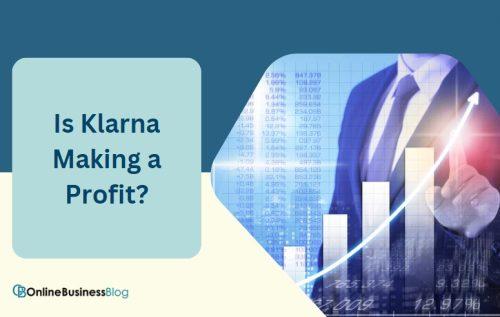
Klarna, the popular payment service provider, has been making waves in the industry with its innovative “Buy Now, Pay Later” (BNPL) model. However, despite its rapid growth and success, Klarna has yet to turn a profit. In fact, in 2022 alone, the company reported a loss of 10.2 billion Swedish krona (equivalent to US$1 billion).
But don’t let that deter you from recognizing Klarna’s potential. The company is well-positioned for future profitability as it continues to expand and diversify its offerings. In the first quarter of 2023, Klarna saw a net loss of 1.3 billion Swedish krona (US$120.7 million), down by an impressive 50% compared to the same period last year.
One of the key drivers behind Klarna’s growth is its focus on BNPL services, which have become increasingly popular among consumers seeking flexible payment options. By allowing customers to make purchases without paying the full amount upfront and instead opting for instalment payments over time, Klarna has tapped into a market demand that shows no signs of slowing down.
While some critics argue that BNPL services can lead to debt problems for consumers, Klarna maintains that its customers are responsible borrowers and emphasizes its strong track record in collecting payments effectively.
Looking ahead, Klarna’s CEO Sebastian Siemiatkowski is optimistic about achieving profitability in the second half of 2023. The company also plans to expand into new markets and offer additional products such as financial services and insurance in the UK.
How Does Klarna Make Money in the UK?
Merchant Fees
Merchant Fees play a crucial role in Klarna’s revenue generation. When online retailers partner with Klarna, they are charged a fee for utilizing its convenient payment processing services. This fee structure typically consists of a percentage of the transaction value, along with a fixed amount per transaction.
By integrating Klarna as a payment option on their websites, merchants can offer their customers the flexibility to pay in instalments or explore other financing options. This not only enhances customer convenience but also has the potential to boost conversion rates and increase average order values.
The appeal for retailers lies in the fact that Klarna’s payment solutions have been proven to drive significant business growth. In fact, partnering with Klarna has resulted in a 44% increase in orders and an impressive 68% surge in order volume.
For merchants looking to provide seamless and flexible payment options while maximizing their revenue potential, incorporating Klarna into their online platforms proves beneficial. It enables them to tap into new consumer segments seeking alternative ways of purchasing products without compromising financial stability or flexibility.
Klarna’s merchant fees serve as an investment toward enhancing both customer experience and business growth for online retailers across various industries worldwide.
Interest and Financing Charges

Interest and financing charges are an important aspect of Klarna’s revenue model. When customers opt for the convenience of splitting their purchases into instalment payments, Klarna applies interest or financing fees on the remaining balance. The specific fees charged depend on the terms agreed upon in the financing agreement.
These charges serve as a significant source of revenue for Klarna. By offering consumers flexible payment options, Klarna not only increases customer satisfaction but also generates income through these interest and financing fees.
The ability to pay over time can be particularly appealing to customers who may not have the funds available upfront or prefer spreading out their expenses. With this option, they can enjoy their purchase immediately while managing their budget effectively.
It is worth noting that these fees vary depending on factors such as creditworthiness and length of repayment period. This ensures that Klarna appropriately accounts for risk while providing accessible financial solutions to a wide range of consumers.
By offering instalment payments with associated interest and financing charges, Klarna adds value both to its users and its bottom line. It’s another way in which Klarna continues to innovate in the realm of online consumer finance.
Late Fees
Late Fees: If customers miss a payment or fail to meet the terms of their financing agreement, Klarna may charge late fees. These fees serve as an additional source of revenue for the company.
When using Klarna’s buy now, pay later service, it is important for customers to make timely payments in order to avoid any extra charges. However, if circumstances prevent them from meeting their payment obligations on time, Klarna has implemented a system where late fees are applied.
These late fees act as a deterrent and encourage responsible borrowing behaviour. By imposing penalties for missed payments, Klarna aims to ensure that customers fulfil their financial commitments in a timely manner. It also serves as a way for the company to recoup any potential losses incurred due to delayed or missed payments.
It is essential for customers who choose to use Klarna’s services to carefully review and understand the terms and conditions associated with their financing agreements. By being aware of these details and making prompt payments, they can avoid unnecessary charges and maintain a positive relationship with the company.
While late fees do contribute to Klarna’s revenue stream, they primarily function as both an incentive for responsible borrowing and protection against potential losses resulting from missed or delayed payments.
Merchant Advertising

Merchant Advertising is a key revenue stream for Klarna. The company offers merchants the opportunity to showcase their products and promotions to Klarna’s extensive user base. By purchasing advertising space within the Klarna app or website, merchants can effectively reach a wider audience and boost their sales.
With millions of users relying on Klarna for their shopping needs, it presents an excellent platform for merchants to get noticed. By strategically placing ads within the app or website, they can capture the attention of potential customers who are already engaged in the buying process.
This form of advertising allows merchants to target specific demographics and tailor their messaging accordingly. They can highlight special discounts, exclusive offers, or new product launches to entice consumers into making a purchase.
By partnering with Klarna for advertising purposes, merchants gain access to valuable insights and analytics that help them better understand consumer behaviour. This data-driven approach enables them to refine their marketing strategies and make informed decisions about future campaigns.
Merchant advertising through Klarna provides a win-win situation. Merchants benefit from increased visibility and expanded customer reach while Klarna generates revenue through ad placements. It’s an effective way for both parties to thrive in the competitive e-commerce landscape.
Data Analytics and Insights
Data Analytics and Insights: Klarna, as a payment service provider, has access to an immense amount of valuable data on consumer shopping behaviour. This data is like gold for merchants who are eager to gain insights into their customers’ preferences and behaviours.
By offering merchants access to this data, Klarna empowers them with the knowledge they need to improve their marketing strategies and make informed business decisions. Merchants can analyze metrics such as customer demographics, purchasing patterns, popular products, and even conversion rates.
With these analytics and insights in hand, merchants can better understand their target audience’s needs and tailor their marketing campaigns accordingly. They can identify trends, spot opportunities for growth or expansion, and develop personalized offers that resonate with their customers.
Furthermore, Klarna’s data-driven services come at a cost – merchants may pay for this invaluable resource. However, the benefits they reap from accessing this wealth of information far outweigh the investment made. It’s an opportunity for businesses to gain a competitive edge in today’s fast-paced digital marketplace by harnessing the power of data analytics provided by Klarna.
Cross-Selling and Upselling
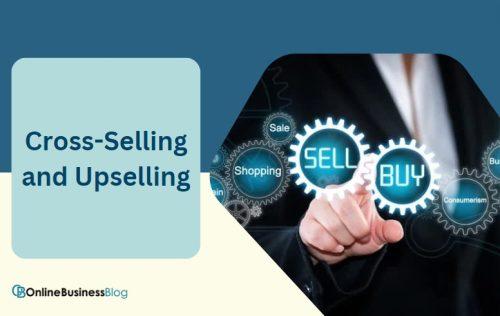
Klarna is not just a payment service provider, but also a platform that offers additional financial products and services to its users. One way the company generates revenue is through cross-selling and upselling. By promoting credit cards or savings accounts to its customers, Klarna can earn commissions or referral fees.
When users apply for these financial products or use them through Klarna’s platform, the company benefits from the additional revenue generated. This strategy allows Klarna to leverage its large user base and offer more comprehensive financial solutions beyond just payment processing.
By expanding into these areas, Klarna aims to become a one-stop shop for all of its customers’ financial needs. Whether it’s managing payments, accessing credit options, or saving money, Klarna wants to be there every step of the way.
This approach not only benefits Klarna by diversifying its income streams but also adds value for its users who can conveniently access various financial services in one place. It’s a win-win situation where both parties benefit from this cross-selling and upselling strategy.
By promoting other financial products and services such as credit cards or savings accounts through their platform, Klarna can generate additional revenue while providing greater convenience and options for their users.
Partnerships and Collaborations
Partnerships and collaborations play a pivotal role in Klarna’s growth strategy. By teaming up with various brands, retailers, and financial institutions, Klarna is able to expand its reach and tap into new customer segments. These partnerships often involve revenue-sharing agreements, where both parties benefit from the success of the collaboration.
One way that Klarna generates income through these partnerships is by offering co-branded credit products. This allows Klarna to leverage the brand recognition and customer base of its partners while providing customers with convenient financing options. By aligning themselves with well-established brands, Klarna gains credibility and increases its visibility in the market.
In addition to co-branded credit products, these partnerships can also result in other arrangements that generate income for Klarna. For example, they may involve cross-promotion or joint marketing campaigns where both parties contribute resources to drive sales and increase brand awareness.
Furthermore, partnering with financial institutions enables Klarna to offer additional services such as banking solutions or investment opportunities to their users. These collaborations open up new revenue streams for Klarna while enhancing their product offerings and strengthening customer loyalty.
Partnerships and collaborations are key components of Klarna’s business model. They allow the company to diversify its income sources, expand its market presence, and deliver added value to both merchants and consumers alike.
Partnerships and Collaborations

Partnerships and collaborations are an essential part of Klarna’s business strategy. By teaming up with various brands, retailers, and financial institutions, Klarna is able to expand its reach and generate additional income. These partnerships can take different forms, such as revenue-sharing agreements or co-branded credit products.
Through revenue-sharing agreements, Klarna earns a portion of the profits generated by its partner companies. This mutually beneficial arrangement allows both parties to benefit from increased sales and customer acquisition. By leveraging its extensive network of merchants and consumers, Klarna is able to bring in more customers for its partners while also boosting its own money-making streams.
In addition to revenue sharing, Klarna also engages in co-branding initiatives with select partners. This involves creating credit products that carry both the partner’s brand name and Klarna’s payment solutions. These co-branded products provide added value for customers while further solidifying the partnership between Klarna and the respective brand or retailer.
Furthermore, these partnerships may involve other arrangements that contribute to generating income for Klarna. For instance, collaboration with financial institutions could result in offering specialized financial services or banking solutions through the platform.
Partnerships and collaborations play a vital role in driving growth for Klarna by expanding its ecosystem of merchants and enhancing its range of offerings for consumers.
Conclusion
As we’ve explored in this article, Klarna has a multifaceted business model that allows it to generate revenue from various sources. From merchant fees and interest charges to advertising and data analytics, Klarna has strategically positioned itself as a key player in the payment processing industry.
While the company has not yet achieved profitability, it is on track to do so in the near future. With its growing user base and expanding market reach, Klarna is well-positioned for success.
Furthermore, Klarna’s innovative approach to shopping and finance sets it apart from traditional payment providers. By offering flexible payment options and personalized recommendations through its app, Klarna is able to create a seamless user experience that drives customer engagement.
Klarna’s ability to adapt and evolve within the ever-changing landscape of e-commerce positions it for continued growth and success. As consumers increasingly embrace buy now, pay later services, Klarna stands poised to capitalize on this trend while also diversifying its offerings into new markets and products.
In conclusion (as per your instructions), Klarna’s unique business model continues to disrupt the payments industry while providing value both for consumers looking for flexible payment options and merchants seeking increased sales conversions.
FAQs on How Does Klarna Make Money in the UK?
1. How does Klarna benefit merchants?
Merchants benefit from partnering with Klarna because it leads to increased conversion rates and order volume. Additionally, Klarna provides tools such as business insights and on-site messaging to help merchants increase sales.
2. Does using Klarna affect a consumer’s credit score?
Klarna performs a soft credit check when approving payment for consumers but it does not impact their credit scores.
3. What other services does Klarna offer besides Buy Now Pay Later?
In addition to its core BNPL offering, Klarna has expanded into other products such as banking services (with its banking license), insurance coverage, loyalty programs through its reward club feature and shopping-related features like price comparison tools.


